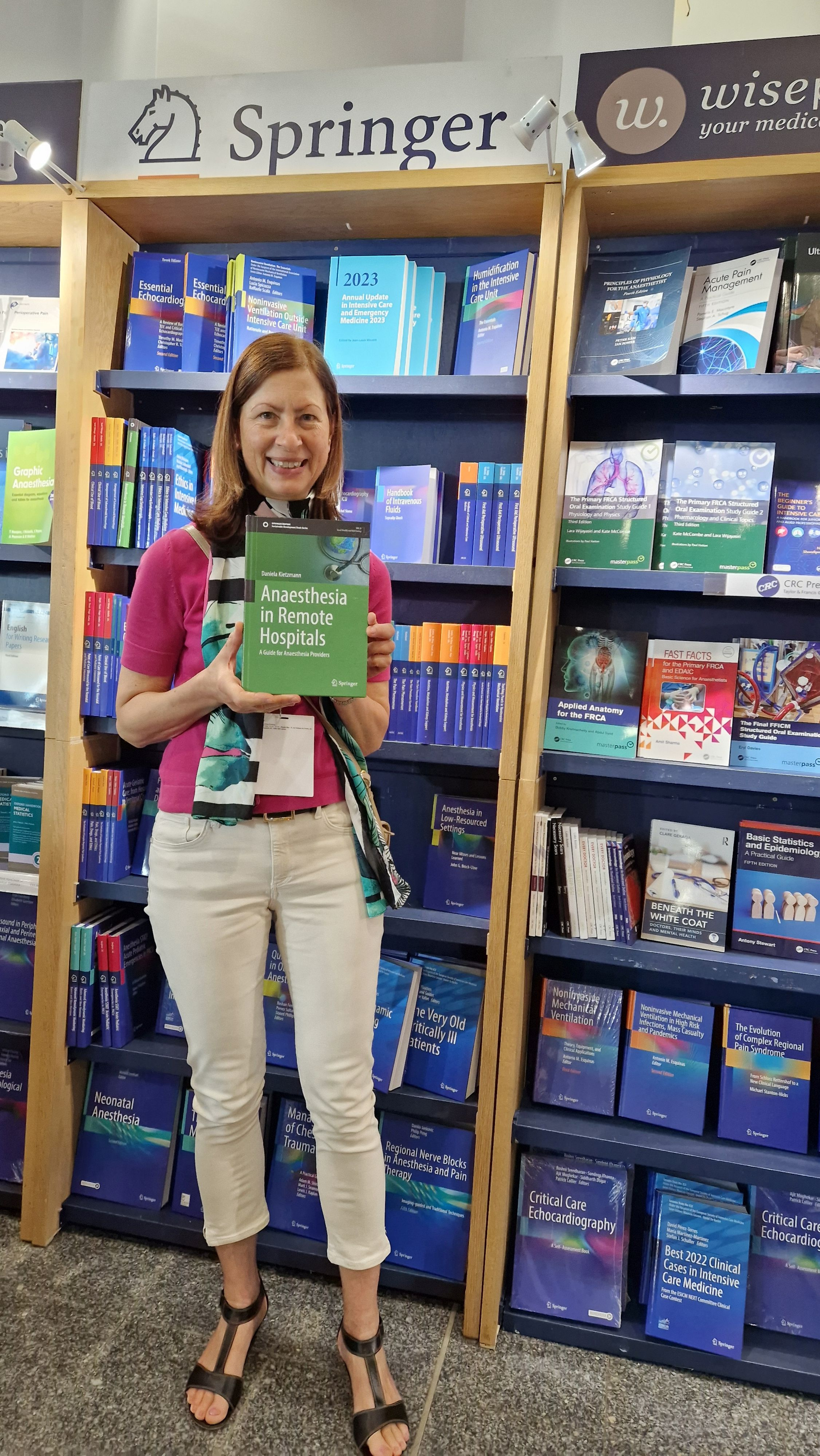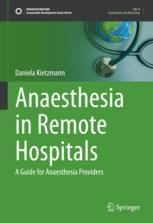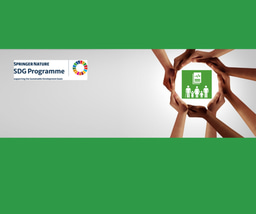Anaesthesia in Remote Hospitals: Q&A with Dr Daniela Kietzmann
Published in Healthcare & Nursing, General & Internal Medicine, and Public Health

This blog relates to Sustainable Development Goal targets 3.8 & 3.C

Why is safe anaesthesia important for patients’ health and wellbeing?
Without safely performed anaesthesia, surgical procedures are impossible. Anaesthesia is crucial for all painful procedures requiring patients’ immobility. Millions of anaesthetics are required every year, for both adults and children, especially for urgent and emergency operations like caesarean sections, the management of pregnancy-related complications as major bleeding, and other common procedures like abdominal surgery in patients with bowel obstruction or trauma care. Those patients are often in critical general condition which increases risks of complications during anaesthesia. In all these examples, among many other conditions, patients are unlikely to survive or to regain a life without disabilities if safe anaesthesia cannot be performed.
Image: Dr Kietzmann in the book store at Euroanaesthesia in Lisboa, 25th May 2025.
Anaesthesia during surgical procedures requires the use of strong drugs to keep patients immobile, to prevent them from suffering from pain and from remembering anything of the surgery. Such strong drugs produce significant side effects on breathing, the heart, and circulation, which need to be managed adequately. Safe anaesthesia requires the administration of pure oxygen and continuous monitoring of the vital signs of the patients with advanced technical equipment.
However, safe anaesthesia is not accessible for the majority of people worldwide. Universal health coverage is currently far from being achieved and millions of people die from preventable conditions every year.
Anaesthesia equipment and drugs are expensive. In countries without health insurance for everybody, patients in a poor economic position often seek hospital care too late (if at all) when their general condition is compromised. They often seek care when irreversible complications, such as death of the unborn baby in the mother’s womb, have already occurred.
How do anaesthesia practices and practitioners differ in high-income/urban settings vs in remote settings?
Well, they differ markedly. The number of specialist doctors for anaesthesia (anaesthesiologists), is around less than 1 per 100000 inhabitants in LICs versus more than 20 per 100000 people in HICs. Most anaesthetics in LICs and LMICs, especially in Subsaharan Africa, are provided by CRNAs (certified registered nurse anaesthetists) or by health care workers without a certified qualification for anaesthesia. Both together are called NPAPs (non-physician anaesthesia providers). Many NPAPs are working alone and cannot call a senior for help.
Anaesthesia practice in LICs and in the rural areas of LMICs is often simpler, as they often only have access to basic equipment and a smaller scale of anaesthesia drugs. Regional blocks are often unavailable in remote settings. There is often no equipment for paediatric anaesthesia, especially for newborns.
What challenges do anaesthesiologists in low-resource hospitals face?
Often, there are no anaesthesiologists at all in low-resource hospitals. When I am in the Southern Zone of Tanzania, I am the only one or there are maybe maximum 2 more in a catchment area of 500 km around my place. Therefore, let us talk about the challenges which NPAPs and physicians without specialisation for anaesthesiology face. Without having anaesthesiologists available, they are forced to provide anaesthesia.
Typical challenges of NPAPs in low-resource hospitals are: working alone instead of in a team of at least two; being trained 1 year at best (not sufficient); having no reliable source of oxygen; having no reliably functioning anaesthesia machine; insufficient skills or tools for airway management. They face difficulties monitoring patient vital signs to assess the quality of patient’s breathing and circulation. Important drugs such as inhalational anaesthetic agents, muscle relaxants, or potent painkillers like morphine may be unavailable. They would try to care for bleeding patients with no access to blood transfusions. Electricity failure means you have to perform a caesarean section in the torch light of your mobile phone. NPAPs may be overworked because they are too often on call and working the next day after having been on night duty. Seeing so many patients dying from preventable causes, you feel helpless as you wish to provide better quality of care.
What changes are needed to improve anaesthesia practices in remote hospitals, and how might this improve patient safety?
Better infrastructure with uninterrupted electrical power and continuously available pure oxygen is necessary. Improved supply of essential drugs and disposables is needed, as is well-maintained and functioning basic anaesthesia equipment in all health facilities where major operations are performed. All this must be available for all people regardless of their economic situation.
An increased workforce of better-educated anaesthesia providers is badly needed in most parts of the world. Training is crucial. Larger training centres are needed to train more non-physician and physician anaesthetists. Regular on-the-job training is required, including workshops or case-discussions and lectures for those who are practicing. Staff could even train each other if encouraged and provided with some time every week for that purpose. Training material, especially the free material provided online on anaesthesia platforms like WFSA (World Federation of Societies of Anesthesiologists) should be used extensively. Improving the attitude of working carefully, preparing your environment, using checklists before starting anaesthesia and surgery would increase patient safety without adding to the costs and help preventing complications and deaths.
How do you hope your book will help anaesthesiologists in remote hospitals?
I hope it will be used a lot for training in schools of anaesthesia, especially in LICs and LMICs. The book is mainly for NPAPs, anaesthesia providers who are working without an available physician anaesthesiologist. For NPAPs it can be used as the primary handbook, even as a short textbook including the most important objectives within everyday anaesthesia.
For anaesthesiologists in remote settings, the book will be a source of inspiration for providing training. It is a guide on how to manage situations with a lack of essential drugs or equipment.
Where can people find your book?
It can be obtained where books are sold; it can be ordered online via SpringerLink or via other online stores.
Follow the Topic
Your space to connect: The Primary immunodeficiency disorders Hub
A new Communities’ space to connect, collaborate, and explore research on Clinical Medicine, Immunology, and Diseases!
Continue reading announcement
.png)





Please sign in or register for FREE
If you are a registered user on Research Communities by Springer Nature, please sign in